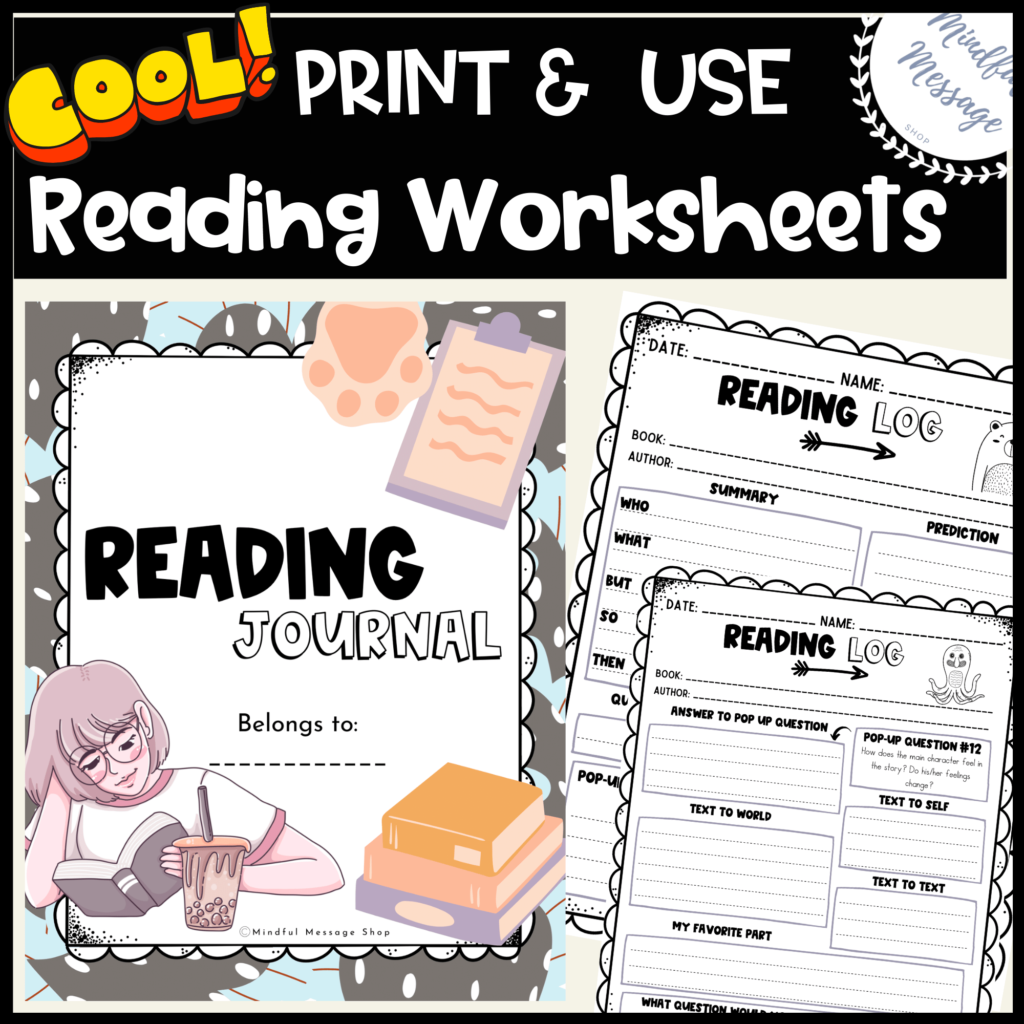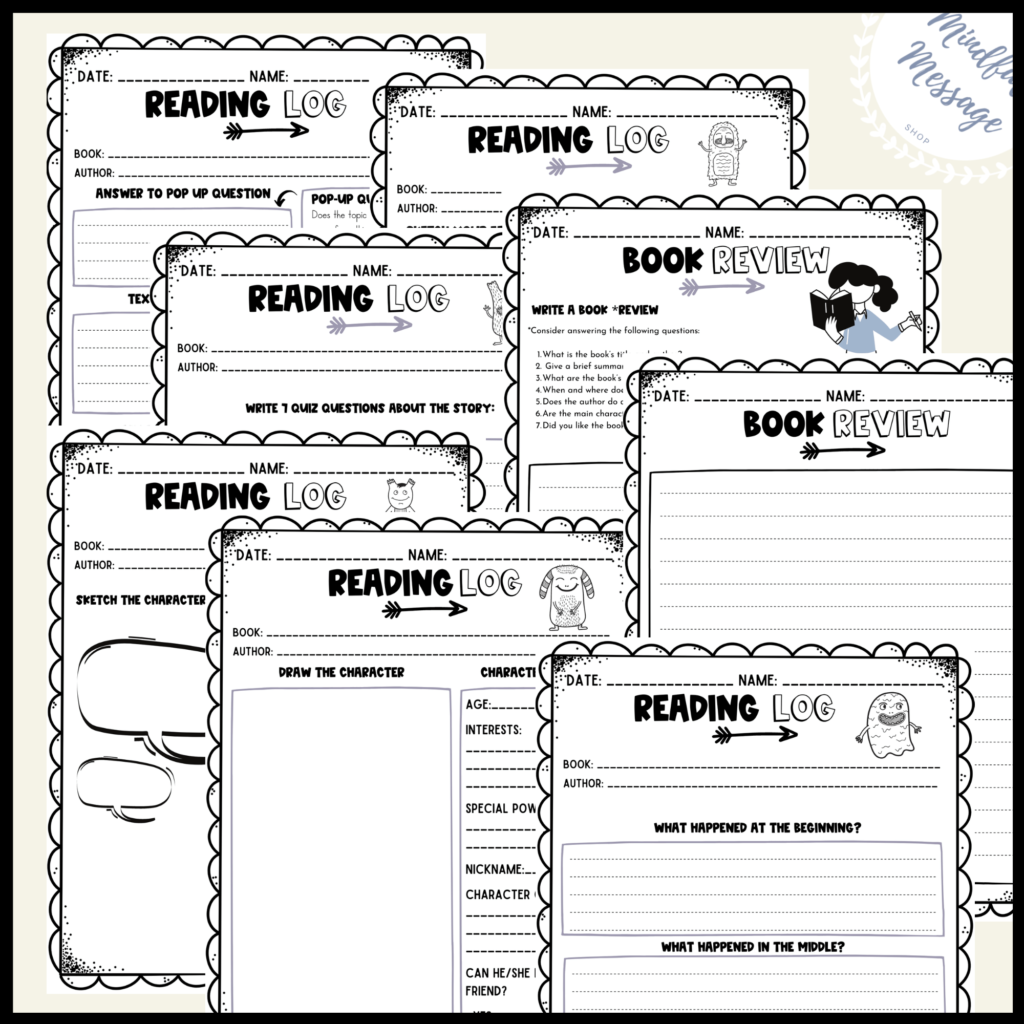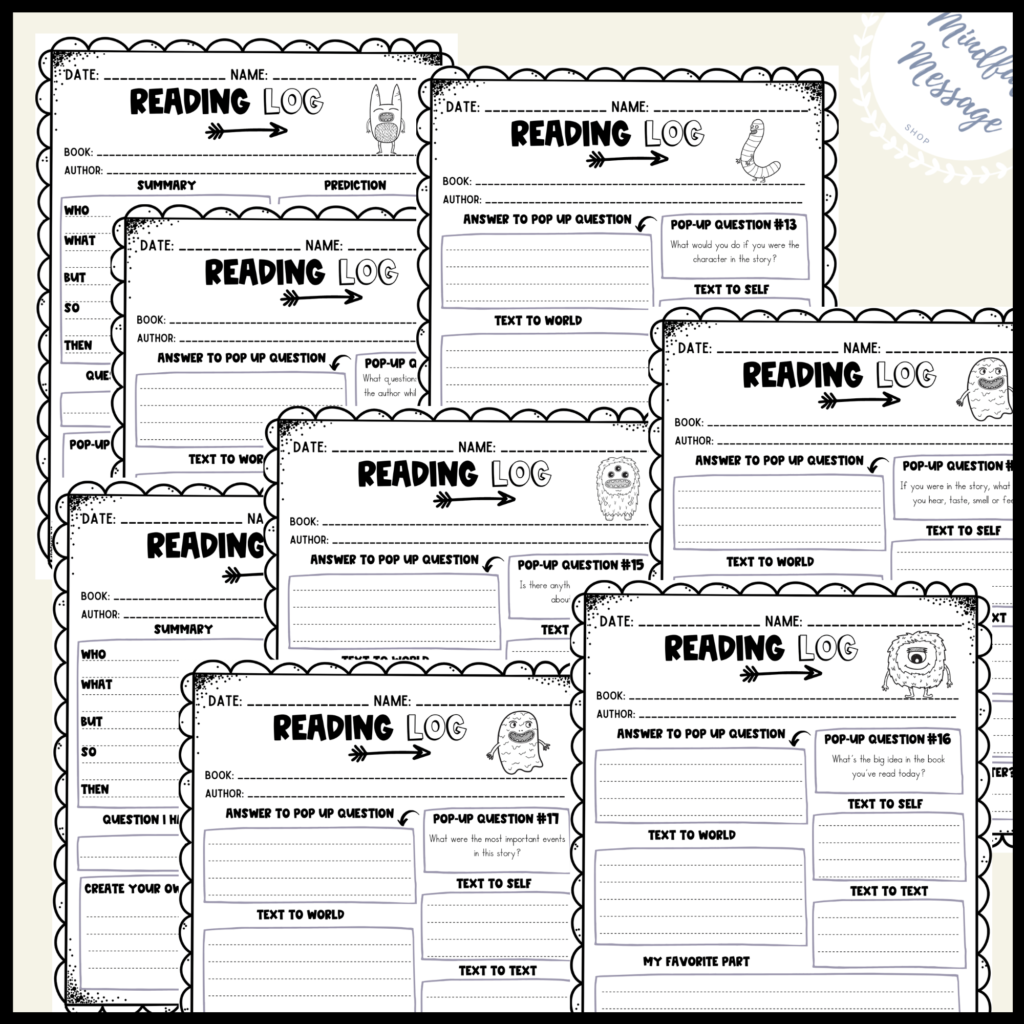Reading Comprehension Worksheets: The Basics of Text Comprehension to Teach.
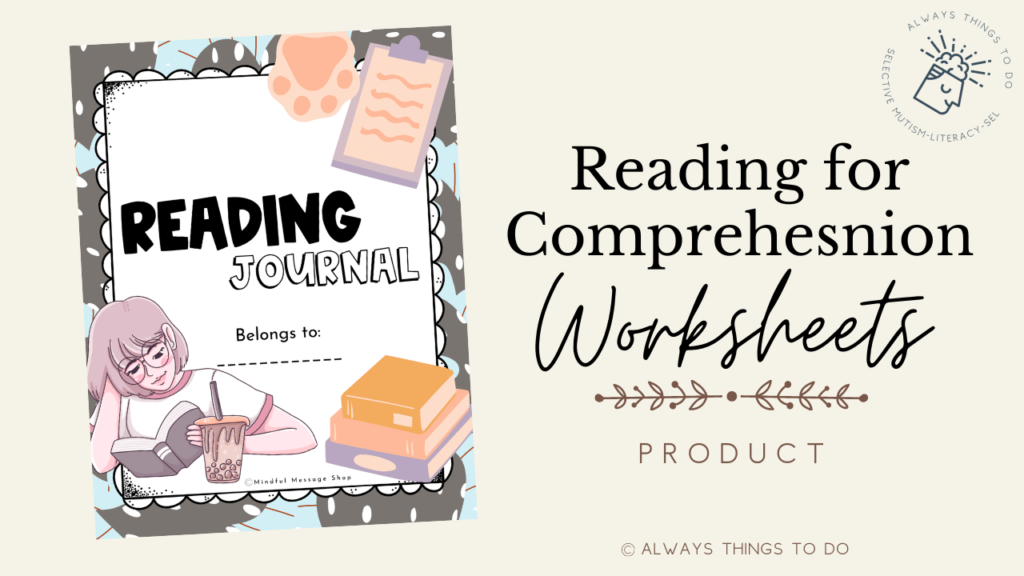
Why Reading Comprehension is Hard.
Download this free sample of the reading comprehension worksheets to use with creating a summary.
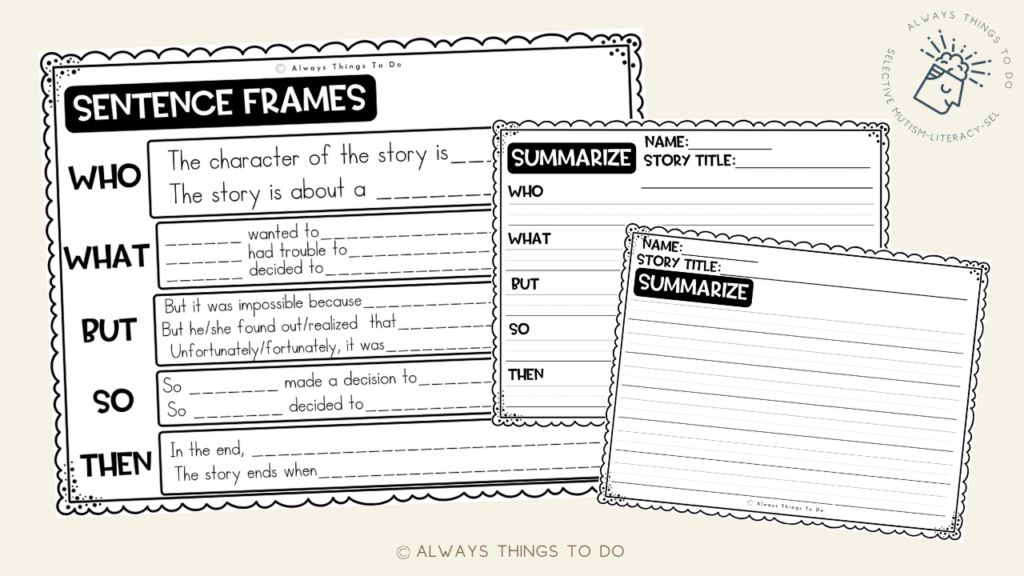
Elementary school students usually have a hard time responding to literature and being engaged in reading comprehension activities. This may be explained by a couple of reasons:
- Students who are still learning to decode put a lot of effort and attentional resources into reading the letters and words. It goes without saying that thinking beyond the code of text for emerging and beginner readers is often hard.
- Understanding the text beyond the code (letters, words, sentences) requires metacognition, or thinking about their own thinking. Elementary students just start developing their metacognitive skills, so reading comprehension activities will require a lot of modeling of metacognitive thinking on behalf of the teacher.
- Reading comprehension activates usually require students to function at higher order thinking levels and engage in evaluation, analysis, and synthesis of the information.
- Finally, reading develops like a muscle. The most exposure students have to reading comprehension at home and in a classroom, the stronger their higher order thinking will become. Students who have minimal opportunities to read at home unfortunately take much longer to develop their higher order thinking abilities.
Basic Rules for Teaching Reading Comprehension.
Teaching reading comprehension is hard and a time-consuming process. However, there are 3 easy rules I have been focusing on in my 2nd-grade classroom:
1. Go slow.
I take enough time to teach students any strategy of reading comprehension (summary, connections, predictions, etc.).
More fluent and beginner readers benefit equally from enough exposure to and the practice of reading strategies. A more fluent reader, in fact, can often be confusing.
Their fluency in reading seems to come with comprehension of the ideas and themes. However, this is not always true. Fluent readers often struggle with reading comprehension activities since they do not think about the messages and ideas in the story like they should.
Taking a week or even longer to teach one reading comprehension strategy and practice it with different texts may be sufficient for the students to start incorporating the strategy into their metacognitive thinking about any stories they read.
2. Starts with the basics.
Before teaching any complex reading comprehension strategy (ex.: summary), start with the basics.
Some of the easier reading comprehension strategies to start with are:
- Predictions
- Connections (text to world, text to text, text to myself)
- Sketching/ illustrating the scene in the story.
- Beginning, middle , end, etc.
When students become comfortable with basic reading comprehension strategies, it’s time to teach them more difficult reading comprehension strategies that will require even more time, exposure, and modeling.
Among more complex reading comprehension strategies to teach are: summarizing, asking questions, finding evidence, interpreting the theme, interpreting the author’s message.
3. Model a lot.
Modeling how to use strategies for reading comprehension is essential. The more you model, the better your students are at imitating the same thinking behaviors.
Modeling usually will have a few important components:
- Thinking outload and naming the strategy.
- Modeling the strategy visually (writing, drawing pictures).
- Teaching language to help students talk about the text using the vocabulary you want them to know. Teaching vocabulary to think and talk about the strategy and about reading is essential for ELLs in your classroom. At the same it teaching vocabulary explicitly will support your monolingual students and elevate their vocabulary.
Like with exposure, modeling reading comprehension strategy should be continuous so that students become comfortable with it and have enough time to practice.
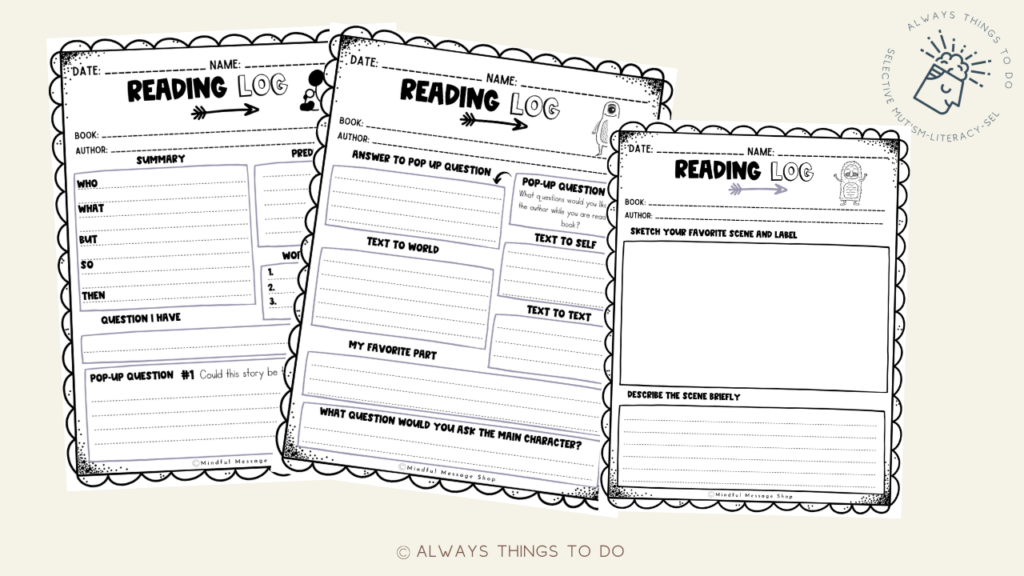
Essential Routines for Teaching Reading Comprehension to Elementary Students.
When teaching a reading comprehension strategy, choose more simple texts so that students’ attention resources are dedicated to understanding the ideas rather than trying to read the words.
The routine for teaching a particular reading comprehension strategy would look something like this:
- Name the strategy (use illustration, anchor chart, etc.)
- Read the simple story and model how to use the strategy (thinking outload).
- Introduce the vocabulary that can support your students in talking about the strategy.
- Practice the strategy and using the vocabulary together with students as if they are the actors.
- Give students instructions to practice in pairs or groups and remind them to use the vocabulary (provide sentence stems and words).
- Try the strategy with different types of texts (fairy tales, fiction, non-fiction, poetry, longer or shorter stories).
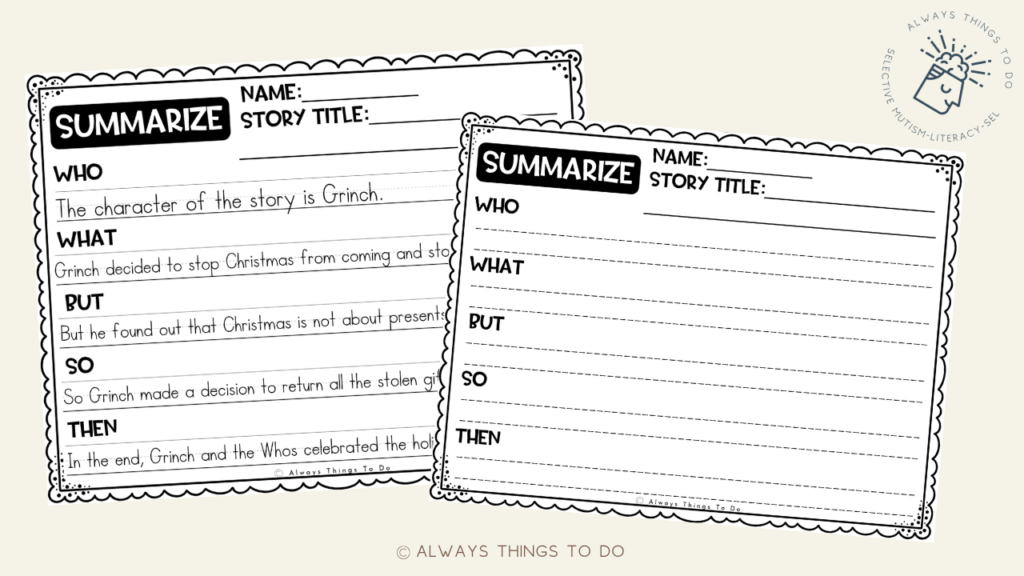
Differentiation of Reading Comprehension for ELLs.
Since teaching the reading comprehension strategies places a huge emphasis on being able to talk about the text (write about the text), teaching vocabulary is essential to support English language learners at different levels.
Differentiation of the reading comprehension for English language learners can be done through:
- Providing visuals of the reading comprehension strategy (posters, charts)
- Providing sentence stems for students to use (Ex.: the story reminds of _______ .I notice__________ .I see____________. The story makes me think of__________. The character of the story is _________. He decided to___________. Finally, ___________.
- Providing a variety of vocabulary words to support ELLs (Ex.: author, idea, connection, etc.).
- Engage students in practicing the strategy with more fluent students so that they can model thinking outload and talking about the strategy.
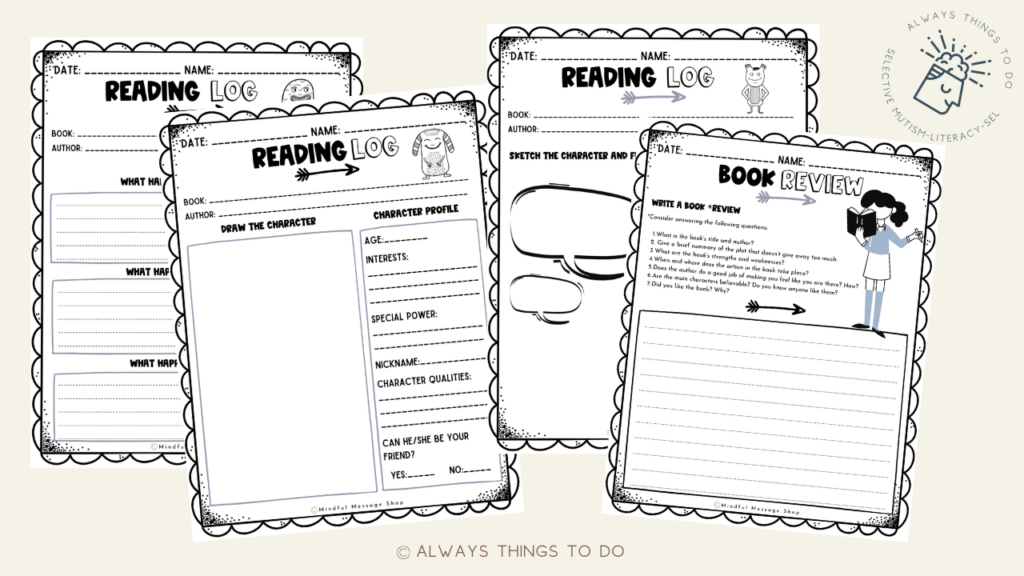
The following reading for comprehension worksheets have a variety of printable to use with elementary school students (2 grade +)
- Making a prediction.
- Creating a summary.
- Making connections: text to world, text to text, text to myself.
- Asking questions.
- Sketching the scene of the story.
- Characters thoughts.
- Asking questions about the story.
- Creating a collage.
- Writing a book review.
- Creating a character profile.
- Describing the beginning, middle, and the end.
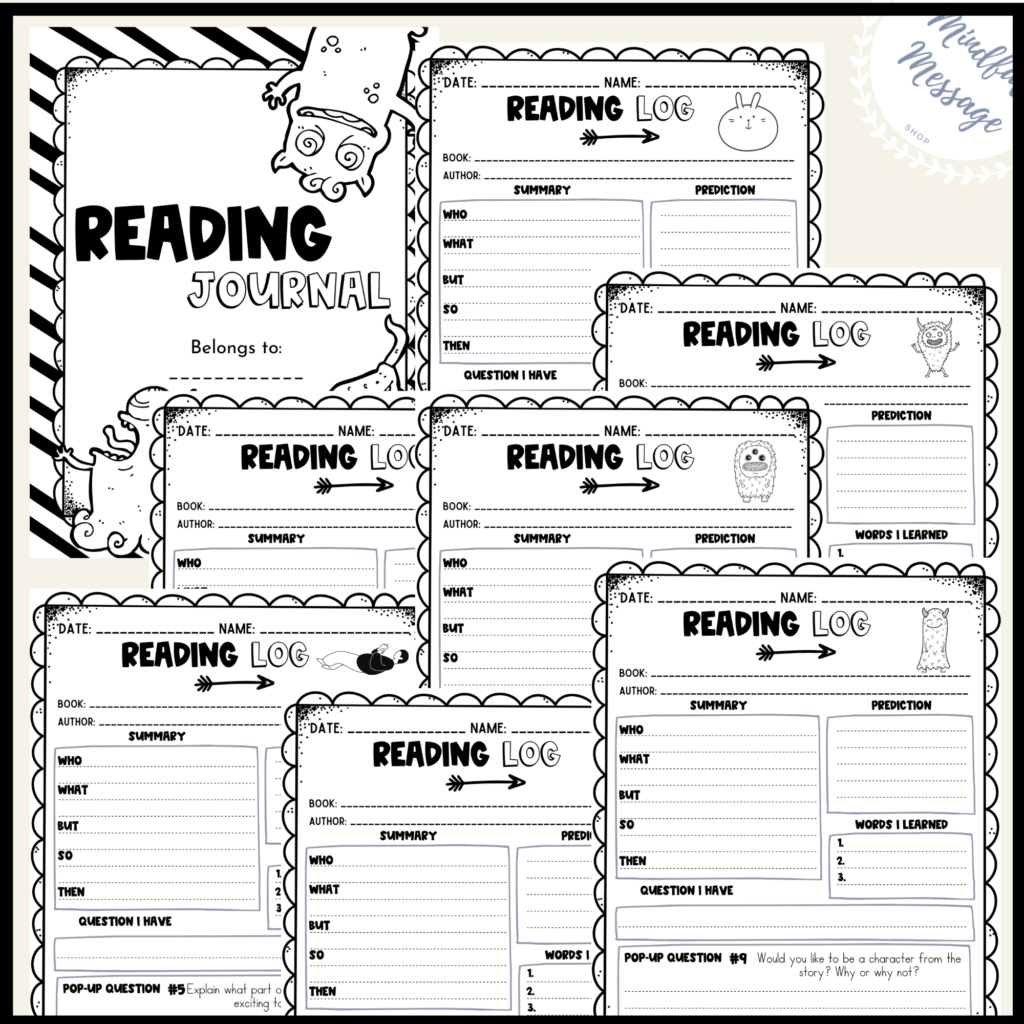
Consider other unique resources for your classroom:
Outer Space Coloring Pages and Other Coloring Worksheets for Kids.
What Mindfulness Is In a Classroom: Must-Have Activities.
How to Use Get To Know You Questions to Build Self-Awareness.
What Is Self-Awareness and How To Teach It?
Connect on Instagram!

